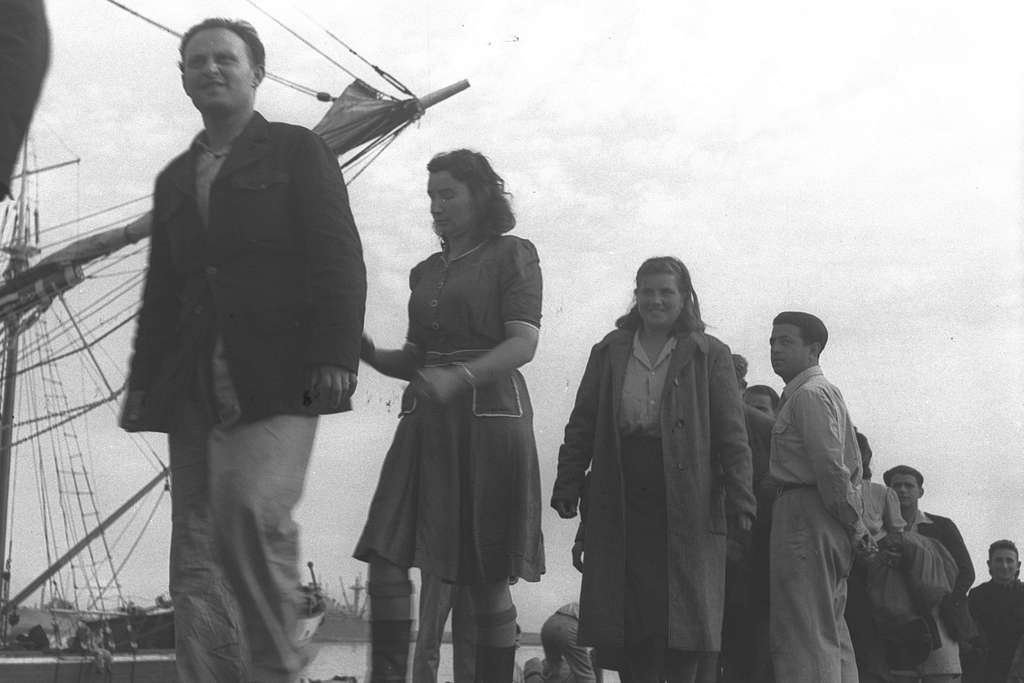When you think of Israel, what comes to mind? You might think about its ancient history, technological innovations, beautiful scenery, or delicious food. But…diversity? It’s probably not the first thing that comes to mind for most people when they think about Israel.
You might think that Israelis are primarily white, Ashkenazi Jews. But that’s a common misconception about the Jewish state.
In fact, Israel has welcomed a dizzying number of immigrants from nearly every corner of the world, including religious and non-religious, Jewish and non-Jewish, light-skinned and dark-skinned, and babies and bubbies.
So how did this “Immigration Nation” come to be?

Israel is a multicultural democracy. It’s about 20% Arab, and 80% Jewish. That means there are really two big stories about diversity. One is about Jews and non-Jews figuring out how to live together in the Jewish state.
The other is about diverse Jews living together. Just as non-Jews in Israel include Muslims, Christians, Bedouin, Druze, and Circassians, Israeli Jews are diverse too. They come from over 100 countries, so most of them spoke different languages before learning Hebrew.
In 1948, the year Israel was established, only 600,000 Jews lived there. Remarkably and with lightning speed, Israel absorbed 360,000 Holocaust survivors in its first years.
In the 1950s, it absorbed 850,000 Jews from Arab and Muslim countries, who were fleeing antisemitism. Since the 1980s, it has taken in nearly 90,0000 Ethiopian Jews, and another one million Russians since the 1990s. That’s a lot of people.
These refugees were often running from antisemitism and toward a Jewish home. They made what is called “aliyah.”
“Aliyah” means “ascent” or “going up.” The term captures Jews’ longing for Zion for nearly 2,000 years. In the last 75 years, it describes the phenomenon of Jews coming to Israel and making the modern Jewish state their home.
Immigration isn’t just something that Israel allows: it’s fundamental to what Israel is. The philosopher Eliezer Schweid called Israel “an immigrant-absorbing state.” That’s reflected in Israel’s laws and policies. The famous Law of Return offers every Jew born anywhere automatic citizenship. Providing refuge in their ancient homeland after centuries of homelessness and oppression is built into the fabric of the country. It goes beyond just welcoming immigrants. Israel also organizes its economy and education system to integrate those immigrants.
Of course, absorbing immigrants is stressful and never seamless. Like in other countries, immigrants to Israel experience discrimination, unemployment, and the trauma of displacement. For example, Holocaust survivors in the 1940s were mocked for not fighting back against the Nazis. Jews from Arab lands in the 1950s were mocked for being too religious and not being Western enough. North American immigrants were bullied for being too Western.
Yet, every new immigrant reminds Israelis who they are and what the Zionist project is all about.

For many Jews from Arab and Muslim lands, moving to Israel in the 1950s was hard. In many cases, it meant leaving the country where their families had lived for centuries. Sometimes it meant leaving great wealth behind. “We are Arab Jews,” many Israelis still say. Clumped together by Israelis as “Mizrahim,” Jews from the East, they even felt compelled to establish their own political party in the 1980s, Shas, to demand equality.
Nearly 40 years after the Jews arrived from Muslim lands, Jews started arriving from the Soviet Union. One of them was Natan Sharansky. Sharansky had been imprisoned in the Soviet Union’s prison system, the Gulag, for nine years, simply for speaking up and demanding the right to move to Israel. In February 1986, he arrived in Jerusalem.
That night, ecstatic Israelis carried him to the front of the Kotel, the Western Wall.
Sharansky recalls: “From an ocean of hatred, I find myself in an ocean of love. Having left a [Communist] country where only the government knows what must be done, I arrive in a society where everybody but the government knows what must be done.”
Here’s another inspiring story of an Israeli immigrant: An Ethiopian Jew born Zaude Taspei, Sharon Shalom walked for over two months from Ethiopia to Sudan. He arrived in Israel in 1982 as one of 8,000 Jews who were airlifted to Israel as part of Operation Moses. Today, he is a rabbi for a congregation of mostly European-born Holocaust survivors.
Sharon Shalom recalls asking his grandfather one day, “Grandfather, how old are you?” His grandfather replied, “I’m eight years old.”
Shalom was astonished. “Eight years old? How can that be?” The grandfather explained that when he arrived in Zion, he began counting the years of his life anew.
Today, more and more immigrants come from free, prosperous countries, an “Aliyah of Choice” from Western democracies, not antisemitic autocracies.
That choice to move to Israel and leave behind the comforts of one’s home is not an easy one. The linguistic, social, professional, and cultural adjustments can be challenging, especially when dealing with the famous (or infamous) Israeli bluntness.
With all the immigration and absorption, the diversity and difference, and the chaos and complexity that brings, it’s hard to believe Israel functions at all, let alone that it has grown economically, socially, and technologically.
What’s its secret? First, frequent attacks from the outside tend to unite Israelis. When terrorists attack or bombs fall or natural disasters occur, a tight-knit society becomes even tighter.
Second, Israelis may have many different mother tongues, but there’s one common Jewish language. Beyond the words themselves, Hebrew is a language of a shared past, a shared Bible, and shared roots in the land. It also provides a sense of family.
Finally, there is the Zionist idea, the shared Zionist dream, “lehiyot am chofshi b’artzenu.” The dream to be a free people in the Jewish homeland, after 2000 years of exile.
Each wave of immigrants built Israel as a fulfillment of that dream, persevering through the challenges that arose along the way.
In many countries today, immigration is seen as a problem. Israel continues to be an immigrant-absorbing state. Most Israelis know that it’s this remarkable diversity that the country has stood for which has created such a successful multicultural democratic society.
